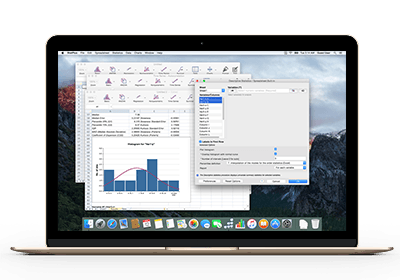

As you can see, the average time for Design 2 is quite a bit slower, and Designs 1 and 3 completion times are faster. Results are shown in two parts (the right-hand portion of Figure 2.6). We have set an alpha level to 0.05 and have included our labels in the first row. In our example ( Figure 2.6), the data are in columns B, C, and D.

Then choose “ANOVA: Single Factor.” This just means that you are looking at one variable (factor). From the “Data” tab, choose the “Data Analysis” button, which is probably on the far right of the button bar.

To run an ANOVA in Excel requires the Analysis ToolPak. If you're testing with more than one type of user, you can use these metrics to compare one user group against another-for example, performance by novices as compared to performance by experts. In addition, you can use these metrics to compare one product against another or one design against another in a competitive analysis. Whichever method you use, you will find that it is helpful to use the same method in iterative studies so that you can establish benchmark metrics and track improvements in the results as the product continues in development and testing. For instance, you would use the mode if you want to show that most people completed the task in four minutes rather than reporting the average time to complete the task across all users. It's not as typically used in usability analysis as the other two methods, but there could be reasons to choose it. It shows the data point that occurred most often. The mode-is the most commonly recurring value. This is the point at which half of the data are above this point and half are below this point. It shows the midpoint in the distribution. The median-is best to use when the range is widely distributed, with a big difference between the highest and lowest point on the range. The mean-is the most often used of the three representations because it is the average for all the data points. To consider these options and choose the best one, you need to know what each represents: The most common methods are to calculate the mean, the median, or the mode. The final two values, skewness and kurtosis, explore how the data is distributed. In a normal bell-shaped curve distribution 68 percent of the values are within one standard deviation from the mean, 95 percent within two standard deviations from the mean, and 99.7 percent within three standard deviations from the mean. Unlike the sample variance, it states the results in the original units of the data set. The standard deviation measures the same dispersion. In the example above, the sample variance for Data Set A is 2.5 and it increases to 12.5 for Data Set C. The larger it is the more spread out the data. The sample variance measures the dispersion of the scores from the mean. In these examples, the range for the Data Set A is 4. The range is distance between the top and the bottom score. However, the data sets are completely different. The same is true for Data Set C: “3, 3, 3, 3, 3”. We saw that both the mean and the median of Data Set A “1, 2, 3, 4, 5” is 3. The next group of measures explores how the scores differ from each other.
#How to add analysis toolpak to mac plus#
You can be: ■Ħ8% sure that the real average is between 2.3 and 3.7 (mean minus the standard error mean plus the standard error) ■ĩ5% sure that the real average is between 1.6 and 4.4 (two standard errors from the mean) ■ĩ9% sure that the real average is between 0.9 and 5.1 (three standard errors from the mean). Think of the example Data Set A, “1, 2, 3, 4, 5” as a sample of a population. It measures how close the sample’s mean is from that of the entire population. The standard error is used for projects where you study a population sample. When there is an even number of values, the median is the average (mean) of the two middle points. When there is an odd number of values, the median is the value exactly in the middle. It is the midpoint value of the data set half the values are above it and half below. The median is another value in the middle. It represents a value in the middle of the population. It is the sum of all the data points divided by the number of data points. The mean is the measure we are most used to when we hear the word “average”. Each is useful for different types of data and distributions. They answer the question, how does the data group together? There are three averages: mean, median and mode. AveragesĪverages are measures of central tendency. The maximum is the highest value and the minimum is the lowest. The count is how many data points there are. The sum is the result of adding up all the numbers in the data set. The results show how many data points there are and where they start and stop. The first set of results describes the characteristics of the data set. Used with permission from Microsoft Corporation.

Excel Descriptive Statistics output © Microsoft Corporation.


 0 kommentar(er)
0 kommentar(er)
